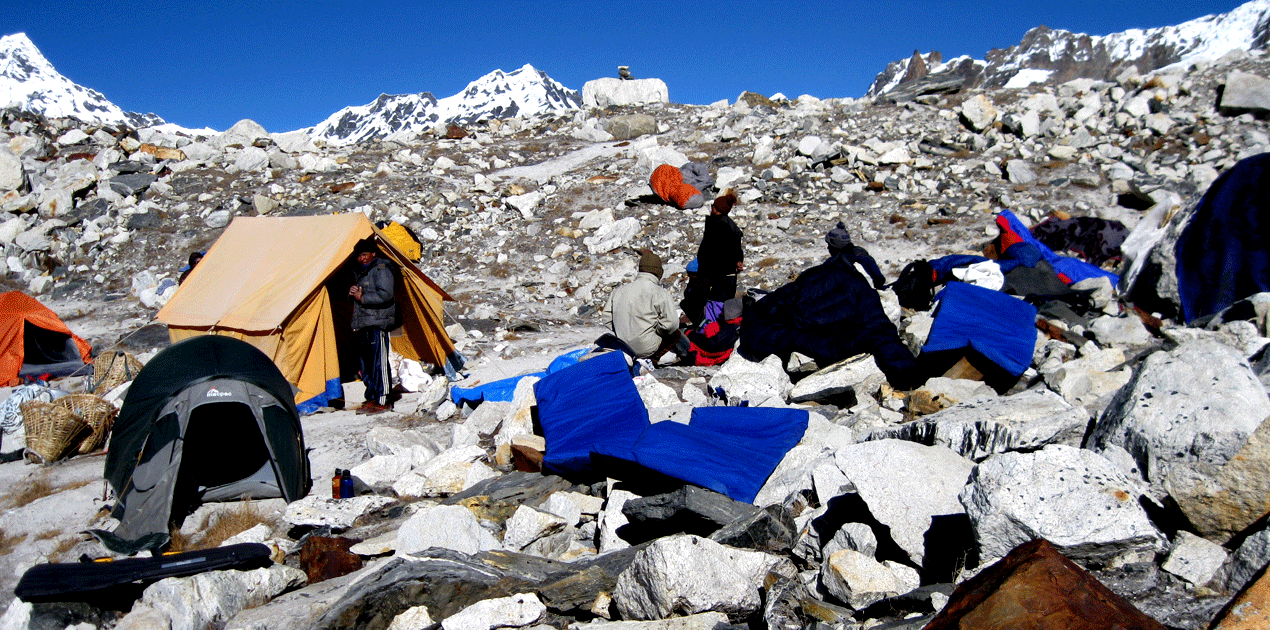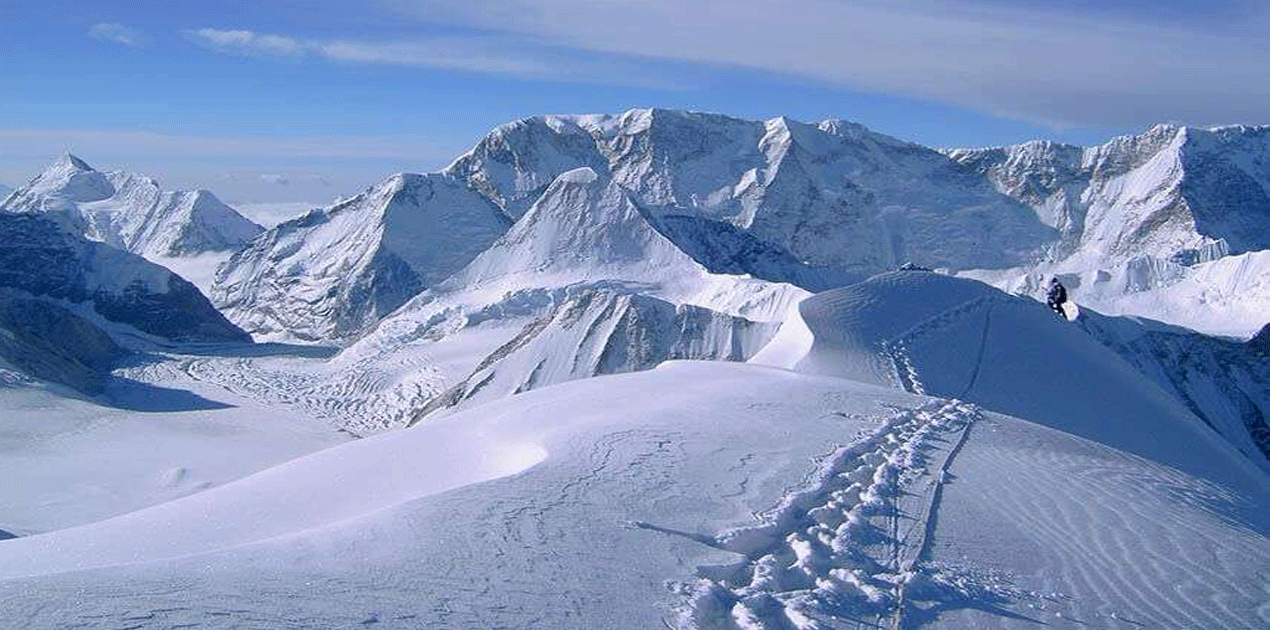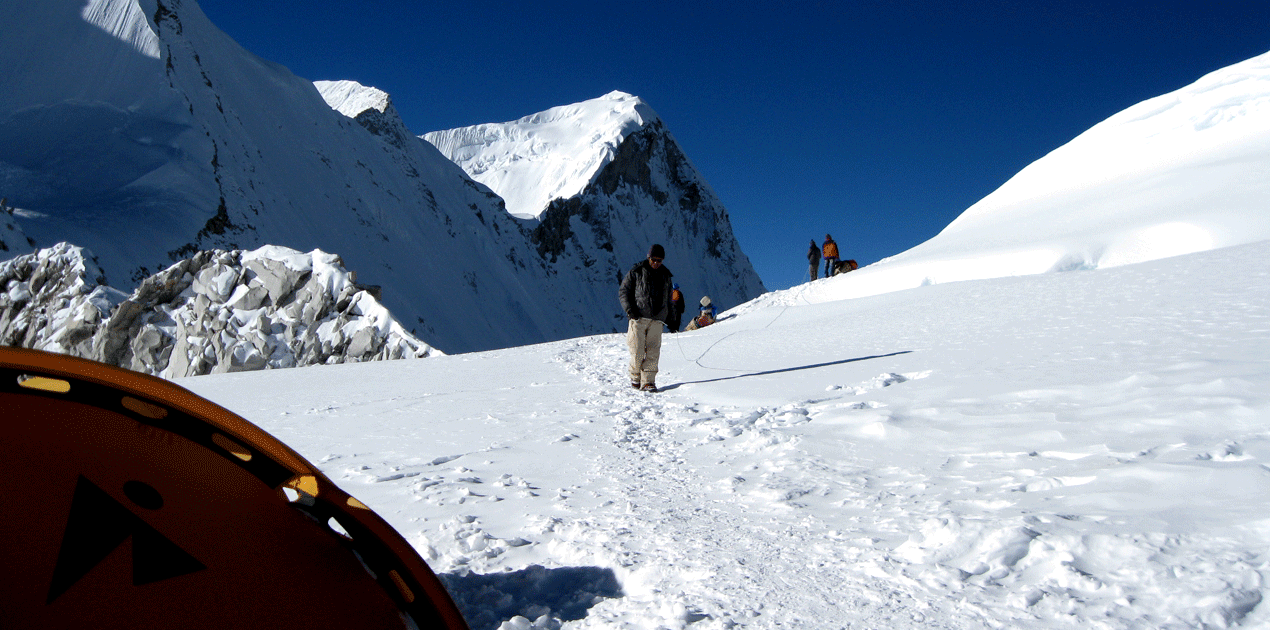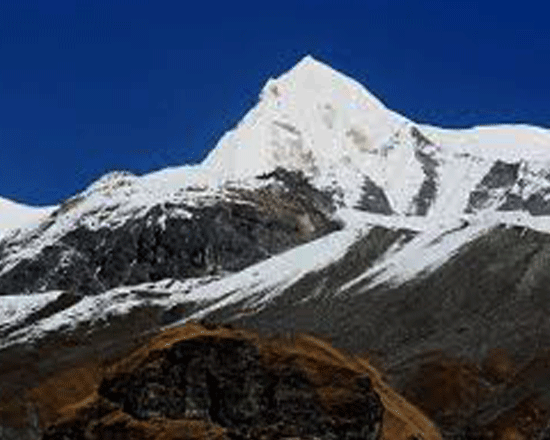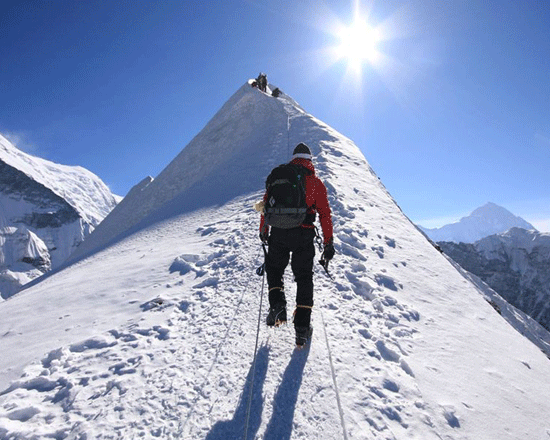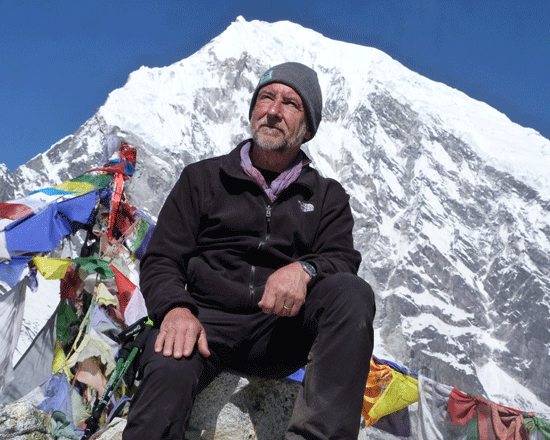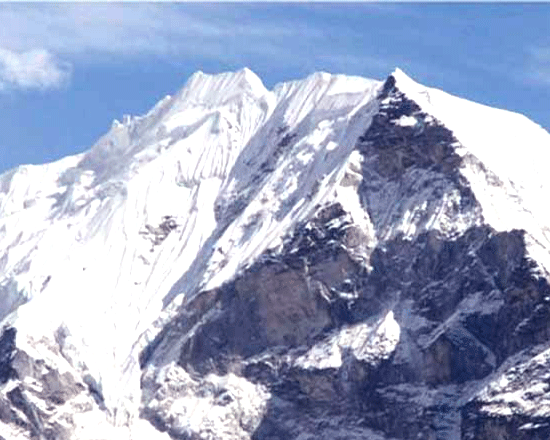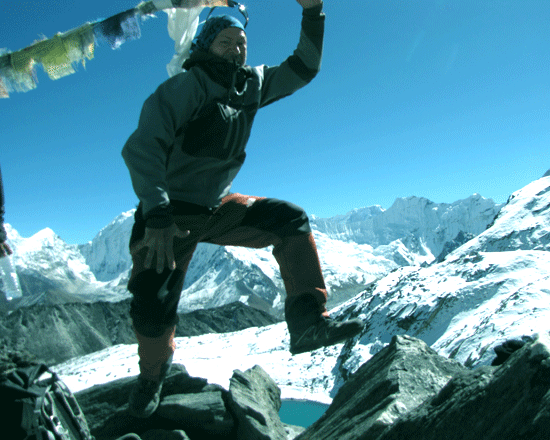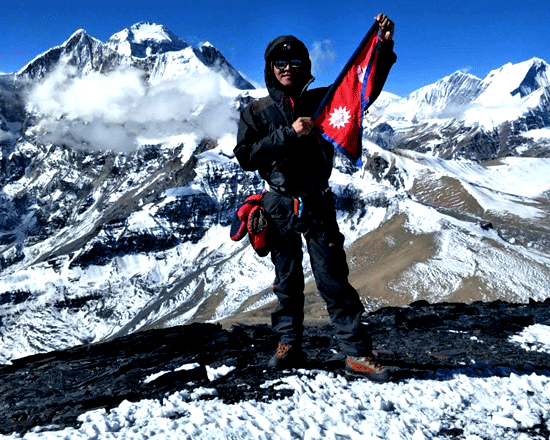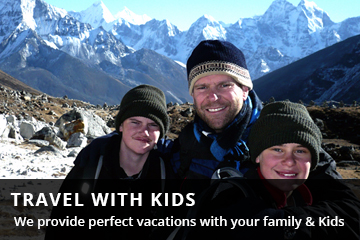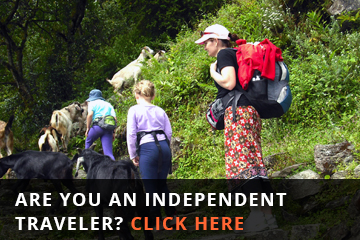Baruntse expedition
Baruntse expedition
Peak Climbing In NepalTrip Facts
This is challenging and technical Trekking, climbing of Nepal, you most have to physically fit and mentally prepare, off the beaten trails, camping or challenging high passes Treks, at this level can he arranged for periods of 18 to 32 days. Typically, a gradual ascent through a green river valley will lead you up to a number of high passes, where you will reach the altitude of 5416m. Often times, you will get a close insight into the Tibetan culture. Participants should expect to trek above 5416m/17872ft. or climbing 6540m.
100%
Overview
Baruntse Expedition Nepal 35 days package itinerary
The Baruntse expedition beckons adventurers to ascend the amazing peak, a standing height of 7,129 meters holding peak within the inner Makalu National Park. Surrounded by the majestic mountain ranges of Makalu (8,481m), Everest (8,848m), Cho Oyu (8,201m), Lhotse (8,516m), and Nuptse (7,861m), Baruntse Peak offers a breathtaking panorama of the highest Himalayan peaks from its summit.
Baruntse Peak is situated near Ice Col Pass and surrounded by picturesque glaciers, bordered by the Hunku Glacier to the south, the Barun Glacier to the east, and the Imja Glacier to the north. The name “Baruntse” derives from its location alongside Makalu. Since the first successful summit in 1954, numerous expeditions have challenged its formidable slopes.
Challenges of Baruntse expedtion
Indeed, the Baruntse expedition route is highly challenging, rewarding, and exceptionally demanding compared to other mountains in Nepal. The initial climb, from Baruntse High Camp to Baruntse Camp One, known as the West Col Pass or Ice Col Pass, poses a significant hurdle. Fixed ropes are required to transport climbing equipment, provisions, and team members to Camp One. Moreover, navigating through challenging sections with overhanging corners and ridges is a requisite before reaching the summit.
Our experienced Baruntse climbing Sherpa Guides are well-versed in Baruntse expeditions. With their extensive knowledge, they ensure the safe and secure installation of ropes, utilizing rock pitons, ice screws, and snow bars to navigate the terrain effectively.
Itinerary for Baruntse expedition
The journey to conquer Baruntse expedition begins at Kathmandu International Airport. Our comprehensive 35-day itinerary commences with a flight to Lukla and Chhutanga, followed by a trek through the Hunku Valley, leading us onward to the Pokhari via Mera Summit.
Acclimitization
To acclimatize adequately for the Baruntse expedition, we undertake the remarkable feat of climbing Mera Peak, which stands at 6,476 meters. This achievement serves as a significant milestone before setting our sights on Baruntse. Throughout the expedition, we prioritize ample time for acclimatization to minimize risks. As we trek from Seto Pokhari (5,035m) to Baruntse Base Camp (5,400m) and ascend to Camp One (6,100m), we gradually adapt to higher altitudes. The Baruntse Base Camp offers additional time for acclimatization and essential preparations. Engaging in short climbs at these higher elevations, we periodically return to the base camp, ensuring thorough preparation for the final push to the summit of Baruntse Peak (7,129m), a journey typically spanning seven to ten hours.
Post-Baruntse expedition itinerary climbers have various trekking route options to consider. One option is to proceed towards the Amphu Lapcha pass and merge with the renowned Everest base camp Trekking trails following the successful summit. Alternatively, climbers can arrange their transportation from Baruntse Base Camp or Panch Pokhari to Lukla at their expense. Another possibility is to trek back to the Arun Valley and Makalu base camp via the challenging Sherpani Col pass. The decision regarding the post-Baruntse route ultimately lies with the climbers themselves.
Best season for the expedition
The optimal time for scaling the Baruntse expedition (Peak climbing) is during the spring season, particularly in April and May, or in the autumn season, specifically in September and October. These periods offer favorable weather conditions and stable climbing conditions, providing a safer and more enjoyable expedition experience. Early November in the spring season can also be considered for those seeking the Baruntse adventure.
Leaders of the Baruntse expedition must possess excellent physical fitness and the necessary climbing skills to guide their team to the summit. Their fitness level should surpass average, enabling them to endure the rigorous demands of the climb and lead by example. Their comprehensive climbing skills, including navigating challenging terrain and making calculated decisions, are paramount in ensuring the success and safety of the entire team.
Trip cost for Baruntse expedition
The cost of the Baruntse expedition ranges from USD 8000 to USD 9200 per person, encompassing the entire team. This comprehensive price includes a meticulously crafted itinerary that includes conquering Mera Peak as well. Our top priority is your safety throughout the expedition. Also, ensuring a successful summit while immersing yourself in the local culture and enjoying the journey to the fullest.
Baruntse Expedition Difficulties
The Baruntse Expedition poses greater challenges compared to other peaks in the Khumbu region, requiring mountaineers to overcome various obstacles on the path to the summit.
One significant challenge need to faced by climbers is altitude sickness, resulting from the low oxygen levels at higher altitudes. Symptoms such as muscle pain, dizziness, headaches, and nausea may arise, necessitating timely attention. Adapting to the temperature at higher altitudes and limiting elevation gains can help reduce its effects.
The path to the summit of the Baruntse Expedition involves steep gradients, demanding tremendous physical and mental stamina from climbers. The undulating terrain continuously ascends, making it particularly challenging for novice climbers without prior experience.
The Baruntse Expedition is notorious for its unpredictable weather patterns and extreme temperatures, with rapidly changing conditions and harsh climates at higher altitudes. This unpredictability demands careful planning and preparation to ensure safety and success.
Choosing the right climbing guide is crucial. Nepal Wilderness Trekking Pvt. provides experienced and skilled climbing guides with a proven track record of successful summits on Baruntse Peak and other prominent peaks in the region. Their expertise and familiarity with the terrain and weather conditions can make a significant difference in navigating the challenges of the expedition.
Puja Day at Baruntse Base Camp
On a Baruntse expedition, Puja Day at base camp is a significant cultural and spiritual event that marks the beginning of the climb. This ceremony is rooted in Sherpa and Tibetan Buddhist traditions and to seek the blessings of the gods for the safety and success of the expedition. Here’s what typically happens during Puja Day:
- Setting Up the Altar: An altar is set up with offerings such as food, drink, and religious items. Prayer flags are strung up around the base camp to spread prayers and blessings with the wind.
- Monk or Lama: A Buddhist monk or lama usually conducts the ceremony. They chant prayers and mantras, invoking the deities of the mountains and nature.
- Offerings and Prayers: Climbers, guides, and Sherpas gather around the altar with their climbing gear, blessing it during the ceremony. They offer juniper branches, burning them to create smoke that symbolizes prayers rising to the heavens
- Blessing the Equipment:Climbers place ice axes, crampons, ropes, and helmets around the altar, blessing them for safety during the climb.
- Community Involvement: Everyone involved in the expedition participates, including climbers, guides, Sherpas, and sometimes trekkers who are passing through. This fosters a sense of community and shared purpose.
- Festive Atmosphere: After the formal prayers, the atmosphere becomes more festive. There is often music, dancing, and sharing of food and drink. It is a time to bond and build camaraderie among team members.
Puja Day holds deep respect and plays an integral role in Nepal’s mountaineering tradition. It reflects the blend of adventure and spirituality that characterizes high-altitude climbing in the Himalayas.
After the Puja, the Climb Begins
- Acclimatization and Preparation
- Acclimatization Climbs: Short hikes to higher elevations, then return to base camp.
- Preparation: Final gear checks and strategy reviews.
- Move to Higher Camps
- Camp 1: Set at around 5,700 meters (18,700 feet).
- Camp 2: Located at approximately 6,400 meters (21,000 feet) on the West Col.
- Summit Push
- Summit Day: Early morning start from Camp 2 to reach the 7,129-meter (23,389 feet) summit.
- Descent: Carefully return to Camp 2, then Camp 1, and finally to base camp.
- Trek Out
- Return Trek: Pack up and trek back to the nearest village or town for departure.
Key Points
- Altitude Sickness: Acclimatize properly to avoid sickness.
- Weather: Be prepared for sudden changes.
- Team Support: Essential for safety and morale.
This streamlined process highlights the key stages of the Baruntse expedition from the spiritual start at base camp to the challenging climb and safe return.
About NWT
As a Nepalese company, Nepal Wilderness Trekking upholds responsibility, ethics, and sustainability in mountain adventures. We are a reliable and conscientious local company organizing wilderness trips, dedicated to catering to all your needs, allowing climbers to focus wholeheartedly on their climbing endeavors. Our support enhances the experience for climbers, allowing them to fully enjoy the Baruntse expedition.The other expedition held by NWT are Manalu expedition, Kanchenjunga expedition and Dhaulagiri expedition.
Detail Itinerary
- DAY 01: Upon arrival at Kathmandu International Airport, you will be transferred to your hotel. (Hotel)
- DAY 02: Explore and enjoy sightseeing in the beautiful Kathmandu Valley. (No specific distance or elevation gain was mentioned)
- DAY 03: Fly from Kathmandu to Lukla (2800m) and trek to Chhutanga or Puyan (2800m). The trek distance and elevation gain will vary depending on the season. In some cases, due to the closure of the Chhetra La pass, an alternative route via Puyan will be taken. (Breakfast, Lunch, Dinner, Accommodation)
- DAY 04: Trek to Pangkonngma (2846m). (Breakfast, Lunch, Dinner, Accommodation)
- DAY 05: Trek to Nashing Dingma (2600m). (Breakfast, Lunch, Dinner, Accommodation)
- DAY 06: Trek to Chalem Kharka (3600m). (Breakfast, Lunch, Dinner, Accommodation)
- DAY 07: Trek to Chunbu Khaka (4200m). (Breakfast, Lunch, Dinner, Accommodation)
- DAY 08: Trek to Khote in Hinku Valley (4200m). (Breakfast, Lunch, Dinner, Accommodation)
- DAY 09: Trek to Tagnang (4320m). (Breakfast, Lunch, Dinner, Accommodation)
- DAY 10: Trek to Khare (4950m). (Breakfast, Lunch, Dinner, Accommodation)
- DAY 11: Rest day in Khare. (Breakfast, Lunch, Dinner, Accommodation)
- DAY 12: Trek to Mera High Camp (5750m). (Breakfast, Lunch, Dinner, Accommodation)
- DAY 13: Summit Mera Peak (6461m) and descend to Kongme Dingma (5168m) on the same day. (Breakfast, Lunch, Dinner, Accommodation)
- DAY 14: Trek to Rato Odhar (5000m). (Breakfast, Lunch, Dinner, Accommodation)
- DAY 15: Trek to Panch Pokhari (5250m). (Breakfast, Lunch, Dinner, Accommodation)
- DAY 16: Trek to Baruntse Base Camp (5450m). (Breakfast, Lunch, Dinner, Accommodation)
- DAY 17–28: Climbing period. (7129 elevations)
- DAY 29: Trek to Amphu Latsa Base Camp (5650m). (Breakfast, Lunch, Dinner, Accommodation)
- DAY 30: Trek to Chukung (4730m). (Breakfast, Lunch, Dinner, Accommodation)
- DAY 31: Trek to Pangboche (3930m). (Breakfast, Lunch, Dinner, Accommodation)
- DAY 32: Trek to Namche Bazaar (3440m). (Breakfast, Lunch, Dinner, Accommodation)
- DAY 33: Trek to Lukla (2800m). (Breakfast, Lunch, Dinner, Accommodation)
- DAY 34: Fly from Lukla to Kathmandu and transfer to your hotel. (Breakfast, Hotel)
- DAY 35: Departure and fly back to your home country. (No specific details mentioned)
Cost Included
- Airport transportation as per your arrival date to join the Baruntse expedition
- Kathmandu valley sightseeing guide and car or van
- Standard hotel accommodation in Kathmandu on B/B plan
- Kathmandu Lukla Kathmandu airfare as per the expedition itinerary.
- Baruntse Summiters climbing Sherpa (01 Sherpa: 02 climbers ratio)
- Group climbing gears like rope, ice bar, etc for the Baruntse expedition.
- Mera Peak and Baruntse expedition peak climbing permits and all government taxes.
- National part and conservation permit fee for the expedition.
- Full board high altitude meal while trekking to base camp and climbing Baruntse
- Liaison officer with all his expenses while on Baruntse climbing expedition.
- Expedition Manager, Expedition cook, support crew, and porters with their equipment, daily wages, food, insurance.
- All camping gear including base camp tents, dining tent with table and chair, kitchen and toilet tent
- Mountain Hardware high altitude tents while climbing the Baruntse expedition
- Emergency Oxygen with a regulator, Gamow Bag while on Baruntse expedition.
- EPI gas and burner for a high climb and other required camping gear
- Satellite Phone and Walkie-Talkie in case of emergency.
Cost Excluded
- Medical and personal high-risk insurance
- Nepal entry visa fees
- Main meal in Kathmandu
- Personal equipment and climbing gears.
- International airfare
- Climbing Bonus, tips, and personal nature expenses.
- Applicable permit fees and custom charge for Sat phone, communication equipment, and commercial filming while on Baruntse expedition.
| Trip Dates | Trip Price | Confirmed Pax | Trip Status | |
|---|---|---|---|---|
| Fixed Departures will be added soon! | ||||

